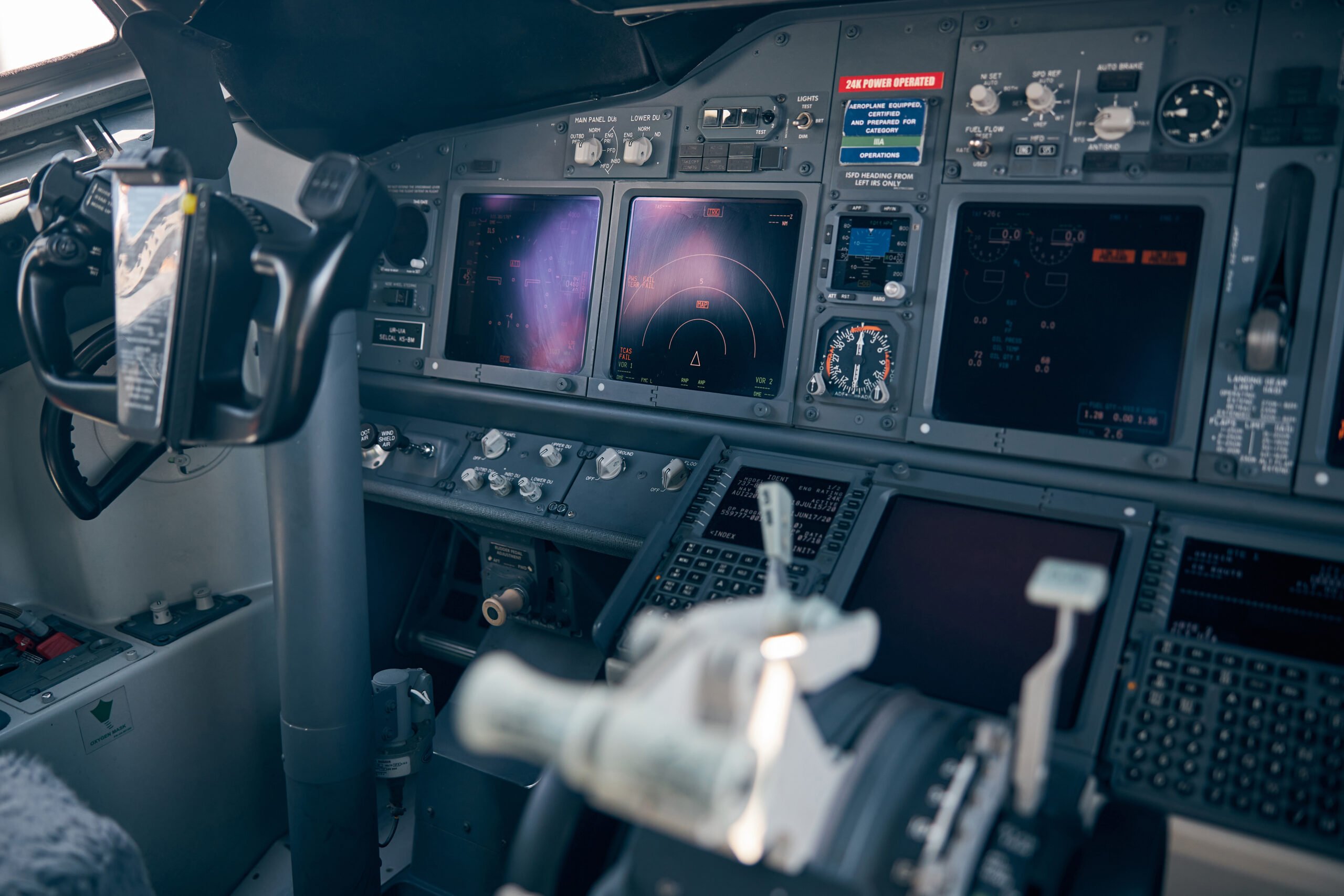In the dynamic world of aviation, where precision, reliability, and safety are paramount, the role of avionics architecture cannot be overstated. At the heart of this architecture lies the ARINC 300 standard, a foundational framework that governs the integration and functionality of avionics systems within aircraft.
From flight control to communication, navigation to entertainment, ARINC 300 plays a pivotal role in shaping various facets of aviation technology.
This introduction sets the stage for exploring the critical role of ARINC 300 in modern aerospace, delving into its significance, applications, and impact on the safety and efficiency of flight operations.
Role of ARINC 300 in avionics architecture
In the intricate tapestry of modern aviation, where safety, efficiency, and precision are paramount, the role of avionics architecture cannot be overstated.
At the heart of this architecture lies ARINC 300, a foundational standard that orchestrates the symphony of electronic systems within an aircraft.
Let’s delve into the pivotal role that ARINC 300 plays in shaping avionics architecture.
Establishing Interoperability:
Avionics systems encompass a myriad of components, from flight controls to navigation aids, each manufactured by different vendors.
ARINC 300 acts as a unifying force, providing a common language and framework for these disparate systems to communicate seamlessly.
By adhering to ARINC 300 standards, avionics manufacturers ensure that their products can integrate smoothly with other components, fostering interoperability across the entire avionics suite.
Defining Physical Interfaces:
Within the avionics landscape, standardization of physical interfaces is crucial to ensure compatibility and ease of installation. ARINC 300 delineates the physical dimensions, connectors, and pinouts for avionics modules, facilitating plug-and-play functionality.
Whether it’s a flight management computer or a communication transceiver, adherence to ARINC 300 specifications ensures that the physical interface is standardized, simplifying maintenance and upgrades.
Enabling Redundancy and Fault Tolerance:
In aviation, redundancy is not a luxury but a necessity. ARINC 300 plays a pivotal role in implementing redundant architectures by specifying protocols for data communication and fault detection.
By utilizing ARINC 300-compliant redundancy management schemes, avionics designers can enhance system reliability and fault tolerance, mitigating the impact of component failures and ensuring the continued safe operation of the aircraft.
Facilitating Modular Design:
The modular nature of avionics architecture, enabled by ARINC 300, offers flexibility and scalability in system design. Avionics systems are composed of interconnected modules, each responsible for specific functions such as navigation, communication, or surveillance.
ARINC 300 defines standard interfaces and protocols for inter-module communication, allowing for the seamless integration of new functionalities or upgrades without necessitating a complete overhaul of the avionics suite.
Supporting Avionics Integration:
As aircraft systems become increasingly complex, the need for efficient integration of avionics components becomes paramount. ARINC 300 provides a framework for avionics integration, specifying requirements for system-level testing, validation, and certification.
By adhering to ARINC 300 guidelines, avionics integrators can streamline the integration process, ensuring that the disparate components function harmoniously as a cohesive whole.
Flight Control Systems
Flight control systems form the nerve center of an aircraft, governing its maneuverability, stability, and response to pilot inputs. Within this critical domain, ARINC 300 plays a fundamental role in shaping the architecture and functionality of these systems.

Integration of ARINC 300 in Flight Control Computers:
Flight control computers (FCCs) are the brains behind the operation of an aircraft’s control surfaces, translating pilot commands into precise movements of ailerons, elevators, and rudders.
ARINC 300 standardizes the interface between FCCs and other avionics components, ensuring seamless communication and compatibility.
By adhering to ARINC 300 specifications, manufacturers can design FCCs that interface seamlessly with navigation systems, autopilots, and other avionics units, enabling cohesive operation of the flight control system.
Role of ARINC 300 in Autopilot Systems:
Autopilot systems relieve pilots of the constant manual control of the aircraft, enabling precise navigation and flight path management.
ARINC 300 defines protocols for data exchange between autopilot systems and other avionics components, facilitating integration and interoperability.
Autopilot functions such as altitude hold, heading hold, and navigation mode selection rely on accurate data from various sensors and systems, all of which are orchestrated through ARINC 300-compliant interfaces.
Importance of Reliability and Redundancy in Flight Control:
The reliability of flight control systems is paramount to aviation safety. ARINC 300 specifies protocols for redundancy management and fault tolerance, ensuring that flight control functions remain operational even in the event of component failures.
Redundant FCCs, sensor inputs, and control surfaces, orchestrated through ARINC 300 standards, provide layers of protection against single points of failure, enhancing the resilience of the flight control system.
Communication Systems
Communication systems are the lifeline of aviation, enabling vital exchanges of information between aircraft and ground stations, as well as among different onboard systems.
Within this critical domain, ARINC 300 plays a pivotal role in shaping the architecture and functionality of communication systems.
ARINC 300 in Aircraft Communication Systems:
Aircraft communication systems encompass a diverse array of functions, including voice communication, data transmission, and surveillance. ARINC 300 standardizes the interfaces and protocols for these systems, ensuring interoperability and compatibility across different avionics components.
Whether it’s VHF radios, SATCOM systems, or TCAS (Traffic Collision Avoidance System), adherence to ARINC 300 specifications allows manufacturers to design communication systems that seamlessly integrate with other avionics units, facilitating efficient and reliable communication.
Integration of ARINC 300 in Data Communication:
In the digital age of aviation, data communication plays an increasingly vital role in enabling air traffic management, flight planning, and operational coordination.
ARINC 300 defines protocols for data exchange between avionics systems, ground stations, and other aircraft, facilitating the transmission of flight plans, weather updates, and surveillance data.
By adhering to ARINC 300 standards, manufacturers can ensure that their data communication systems comply with industry norms and interface seamlessly with existing infrastructure.
Ensuring Secure and Reliable Communication:
Security and reliability are paramount considerations in aviation communication systems. ARINC 300 specifies protocols for data encryption, authentication, and error detection, safeguarding communication channels against unauthorized access and ensuring the integrity of transmitted data.
By implementing ARINC 300-compliant security features, avionics manufacturers can mitigate the risk of cyber threats and ensure that critical communications remain secure and reliable, even in challenging environments.
Navigation Systems
Navigation systems form the cornerstone of aviation, guiding aircraft safely from departure to destination and facilitating precise positioning and situational awareness. Within this crucial domain, ARINC 300 plays a central role in shaping the architecture and functionality of navigation systems.
Role of ARINC 300 in Navigation Equipment:
Navigation equipment encompasses a wide range of technologies, including GPS receivers, inertial navigation systems (INS), and flight management systems (FMS).
ARINC 300 standardizes the interfaces and protocols for these systems, ensuring interoperability and compatibility across different avionics components.
By adhering to ARINC 300 specifications, manufacturers can design navigation equipment that seamlessly integrates with other avionics units, facilitating accurate and reliable navigation throughout all phases of flight.
Integration of ARINC 300 in GPS Receivers and Navigation Displays:
Global Positioning System (GPS) receivers provide precise positioning and timing information, enabling aircraft to determine their exact location in three-dimensional space.
ARINC 300 defines protocols for data exchange between GPS receivers, navigation displays, and other avionics systems, ensuring seamless integration and reliable operation.
Whether it’s displaying navigation waypoints, calculating route deviations, or providing real-time position updates, ARINC 300-compliant navigation displays play a crucial role in enhancing pilot situational awareness and navigation accuracy.
Enhancing Precision and Accuracy in Navigation:
In modern aviation, precision and accuracy are paramount in navigation systems, particularly during approaches and landings in challenging weather conditions or congested airspace.
ARINC 300 specifies requirements for navigation performance and integrity monitoring, ensuring that navigation systems meet stringent industry standards for accuracy, reliability, and availability.
By adhering to ARINC 300 guidelines, manufacturers can design navigation systems that provide precise position information, robust integrity monitoring, and reliable navigation aids, enhancing the safety and efficiency of aircraft operations.
Monitoring and Diagnostics
Monitoring and diagnostics are essential aspects of modern aviation, ensuring the health and performance of aircraft systems and facilitating proactive maintenance to prevent failures and downtime. Within this critical domain, ARINC 300 plays a significant role in shaping the architecture and functionality of monitoring and diagnostic systems.
Application of ARINC 300 in Health Monitoring Systems:
Health monitoring systems continuously assess the status of various aircraft systems, including engines, avionics, and structural components, to detect anomalies and potential failures.
ARINC 300 standardizes the interfaces and protocols for data exchange between health monitoring sensors, diagnostic algorithms, and cockpit displays, ensuring interoperability and compatibility across different avionics components.
By adhering to ARINC 300 specifications, manufacturers can design health monitoring systems that seamlessly integrate with other onboard systems, providing real-time status updates and predictive maintenance alerts to flight crews and maintenance personnel.
Real-Time Diagnostics and Fault Detection:
Real-time diagnostics and fault detection capabilities are crucial for identifying and addressing issues before they escalate into critical failures or emergencies.
ARINC 300 specifies protocols for data transmission and fault reporting, enabling rapid detection and isolation of faults within avionics systems.
Whether it’s detecting sensor failures, identifying software anomalies, or diagnosing communication errors, ARINC 300-compliant diagnostic systems play a crucial role in maintaining the integrity and reliability of aircraft systems.
Proactive Maintenance Strategies Enabled by ARINC 300:
Proactive maintenance strategies leverage data from monitoring and diagnostic systems to anticipate and address maintenance needs before they impact aircraft operations.
ARINC 300 facilitates the integration of monitoring data with maintenance planning and scheduling tools, enabling airlines and operators to optimize maintenance intervals, minimize downtime, and reduce operating costs.
By leveraging ARINC 300-compliant monitoring and diagnostic systems, operators can transition from reactive to proactive maintenance practices, enhancing aircraft reliability and fleet availability.
Entertainment and Passenger Services
Entertainment and passenger services have become integral components of the modern air travel experience, offering passengers a wide array of amenities to enhance comfort and convenience during their journey.
Within this domain, ARINC 300 plays a pivotal role in shaping the architecture and functionality of entertainment and passenger service systems.
ARINC 300 in In-Flight Entertainment Systems:
In-flight entertainment (IFE) systems provide passengers with access to a variety of multimedia content, including movies, TV shows, music, and games, to keep them entertained during flights.
ARINC 300 standardizes the interfaces and protocols for IFE systems, ensuring compatibility and interoperability across different avionics components.
By adhering to ARINC 300 specifications, manufacturers can design IFE systems that seamlessly integrate with other onboard systems, such as cabin management systems and seatback displays, providing passengers with a seamless entertainment experience throughout their journey.
Integration of ARINC 300 in Cabin Management Systems:
Cabin management systems (CMS) encompass a range of functions, including lighting control, temperature regulation, and passenger service requests, to enhance comfort and convenience for passengers and crew.
ARINC 300 defines protocols for data exchange between CMS components, such as control panels, sensors, and actuators, ensuring seamless integration and interoperability.
By adhering to ARINC 300 specifications, manufacturers can design CMS that interface seamlessly with other avionics systems, facilitating efficient management of cabin amenities and services.
Enhancing Passenger Experience through Reliable Technology:
In today’s highly connected world, passengers expect seamless connectivity and access to digital services during their flights.
ARINC 300-compliant entertainment and passenger service systems leverage advanced technologies, such as high-speed internet connectivity and streaming media platforms, to provide passengers with a rich and immersive in-flight experience.
By adhering to ARINC 300 standards, airlines and operators can offer passengers a wide range of entertainment options and personalized services, enhancing satisfaction and loyalty among travelers.
Conclusion
In conclusion, ARINC 300 plays a vital role in shaping various aspects of avionics architecture, including flight control, communication, navigation, monitoring, entertainment, and passenger services.
By providing standardized interfaces, protocols, and specifications, ARINC 300 enables seamless integration, interoperability, and reliability across different avionics systems.
Whether it’s ensuring the safety of flight operations, enhancing passenger experience, or facilitating proactive maintenance strategies, ARINC 300 serves as the backbone of modern aviation technology. As aviation continues to evolve, ARINC 300 will remain indispensable in driving innovation, efficiency, and safety in the aerospace industry.





